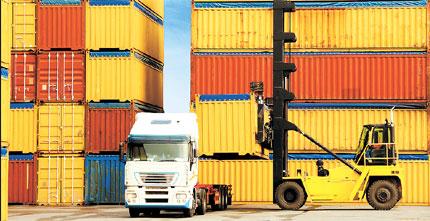
The State Council, China's Cabinet, has unveiled measures in a bid to bring more orderly development to the nation's logistics sector.
China is a big producer of goods, but the supply chain that moves them from point of origin to point of consumption has long been riddled with bottlenecks, fragmentation and a patchwork of rules and taxes.
The State Council, China's Cabinet, last week unveiled eight measures to try to bring more orderly development to the nation's logistics sector. Among them were cuts in road tolls for truckers and smoothing out a hodgepodge of taxes levied on various segments of the industry.
Logistics is the glue of commerce. It involves moving goods from their source of production to markets and end users. The sector spans transport, warehousing, inventory management, freight forwarding and sometimes even repackaging.
Because the sector spans so many facets, rules governing its operation are divided up among numerous government departments, and the taxes they levy push up the costs of delivery and consumption.
The economic stimulus plan put forth by the government in 2009 listed logistics as one of 10 key industries that had been adversely affected by the global economic crisis.
The State Council, after a two-year study, has pledged to unify business tax rates on different steps of the supply chain. At present, for example, there is a 3 percent tax on transport and a 5 percent tax on warehousing and freight forwarding.
If the government were to unify those rates to just 3 percent, warehousing companies could raise their operating profit margins 2 percentage points to 9.95 percent and net profit margins by 1.5 percentage points, Haitong Securities Co said.
The State Council also said it will expand a pilot program to exempt logistics companies from multiple collection of taxes. At present, different companies with varying functions in the process of shipping a load of goods, including transport, distribution and warehousing, are all taxed on the same delivery.
The National Development and Reform Commission and the State Administration of Taxation in 2005 began a pilot program to end the multiple taxes on the supply chain, but at the time, only 593 companies were included. Today, there are more than 60,000 logistics firms operating in China.
Logistics is an important factor in the economy. Last year, the sector accounted for 18 percent of China's gross domestic product, double that of developed countries, said He Liming, director of China Federation of Logistics and Purchasing.
Highway tolls, accounting for one-third of logistics costs, are expected to be reduced under the new proposal, and an electronic toll system will be extended to allow trucks to pass through toll areas without stopping.
One truck driver, who declined to be identified, said high tolls and fuel costs force him to overload his vehicle. "My truck is allowed to carry 20 tons of goods, and the freight payment is about 400 yuan per ton from Jinan to Guangzhou," he explained. "However, the cost of fuel for the trip is 6,500 yuan, and tolls are another 4,500 yuan, so I have to overload the truck or suffer a loss."
The new stimulus plan also calls for improvements in land use policies to allow expansion of convenient warehouse siting.
"We are eager to win government support on land use in major coastal cities, especially in Beijing, Shanghai and Guangzhou, because limited land in those cities is a bottleneck for our expansion," said Zhang Pengfei, president of Shanghai Runbow Logistics and Technology Co.
Zhang said he also welcomes government efforts to help the logistics industry take advantage of new technologies.
"Runbow is now developing e-commerce because of the government's encouragement," he said.
Under its plan, the government is urging bigger logistics firms to integrate their resources and smaller companies to boost their market presence through mergers.

